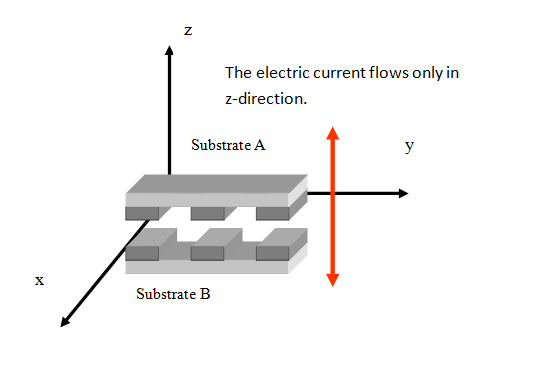TeamChem Material's 75°C-lamination Anisotropic Conductive Film (ACF) is a product that can be used in low-temperature (75-100°C) hot bar lamination. After the lamination, the product offers low electrical impedance and high stability. The product allows conductivity when applied in z-direction, but provides insulation when applied in either x- or y-direction.
Since other existing ACFs in the market work only within 150-180°C, many newly developed materials or manufacturing processes have failed or seen low yield rates due to problems caused by the high-temperature operations. TeamChem has made a breakthrough: its advanced material technology has succeeded in producing an AFC that allows lamination to be done at temperatures as low as 75°C, far lower than the temperature levels where plastics deform. For example, it can replace the pewter fusion process in the production of film-type touch panels and smartphone-use plastic camera lenses. It can also be used to laminate FPC with liquid lens modules. It also provides a solution to the bonding of touch sensors' HD films, a process that cannot be easily done using existing commercial ACF. Depending on the pressure level and the time spent during hot press, TeamChem's N Series ACF can be adjusted to work within 75-100°C, effectively improving production yield rates. It can be applied to newly developed low-temperature processes.
When applying ACF, it is important to choose the right film thickness. Appropriate ACF film thickness is critical to achieving stable lamination. In theory, ACF's thickness should be around half of the combined thickness of the circuits on both the top and bottom substrates. If it's too thin, the film will not be able fill up the gaps between the circuits, resulting in unstable lamination. If it's too thick, resin overflow will occur during hot press, trapping bubbles between circuits and resulting in poor conductivity. For example, a 20 μm layer of circuits on the flexible printed circuit board (FPCB) and a 0.5μm ITO layer on the glass have a combined thickness of 20.5 μm. During hot press, ACF will fill up the gaps between the layers and therefore, the appropriate amount of resin should be half of the combined thickness. In this case, it is 20.5 divided by 2, and it roughly equals to 10. Since the spacing between the top and bottom layers is usually about 5μm, therefore, by adding up the two numbers - 10 and five - we arrive at 15 μm, which is the most appropriate film thickness.
Choosing the right substrates is also important. When the substrate is a FPCB, a flexible, thin substrate should be chosen to avoid any unnecessary stress at connecting points. This is to guarantee stability at the connecting points. The surface of the circuits must also be smooth, or conductivity will be affected.
If necessary, a two-stage hot press process will be needed for the hot-bar lamination using the 75°C ACF. The first stage of the hot press requires thermal pads to spread pressure evenly to avoid bubbles from forming. One can adopt either of the following settings for the hot press: 100°C x 3.0 kg/cm2 x 6 seconds, or 75°C x 3.0 kg/cm2 x 12 seconds. During the second stage, the thermal pads need to be removed to concentrate the pressure on protruding connection points to enable their better contact with the conductive particles. For the second stage, one can choose the same hot press settings as those in the first stage: 100°C x 3.0 kg/cm2 x 6 seconds or 75°C x 3.0 kg/cm2 x 12 seconds.
It is also important to choose the right thermal pads. Thermal pads are used mainly to spread pressure evenly on the hot press surface, avoiding the pressure from concentrating only on the circuit areas and leaving non-circuit areas with almost no pressure. If no or little pressure is exerted on the non-circuit areas, bubbles may not be removed. Therefore, one should choose soft-type thicker (for example, 0.4mm) thermal pads.
Furthermore, attention must be given to maintaining a dry environment when storing and working with the product. ACF's hygroscopic characteristic is the main reason for bubbles to form during hot press. While the problem arising from the hygroscopic characteristic is unavoidable, one needs to try to minimize it. While doing hot press, one must avoid water vaporizing, which occurs in high temperatures for a long period of time. If hot press is done in higher temperatures, one must reduce the duration of the process, or bubbles will form.
Most traditional ACFs uses uniform-sized nickel-gold resin balls to act as their conductive particles. However, TeamChem's 75°C ACF adopts a filamentary nickel powder with particles of various sizes and shapes. This gives advantages over traditional ACFs. First, the requirements for smoothness and thickness uniformity of the lamination substrates' surfaces are less strict than the traditional ACFs, greatly raising the possibility of it replacing connectors. Second, the filamentary nickel powder does not break under high pressure, making it less sensitive to pressure variations during hot press.
TeamChem's ACF features a bonding strength (90°-peel) at about 400-800 N/m, enabling highly stable conductivity. It does not break off under normal operating conditions. For general storage, refrigeration is essential - the lower the storing temperature, the longer the product life. The operation and storage environments must avoid high temperatures and humidity, and if it needs to be reworked, it may be cleaned with acetone.

The direction of the electric current in TeamChem 75°C ACF
DIGITIMES' editorial team was not involved in the creation or production of this content. Companies looking to contribute commercial news or press releases are welcome to contact us.